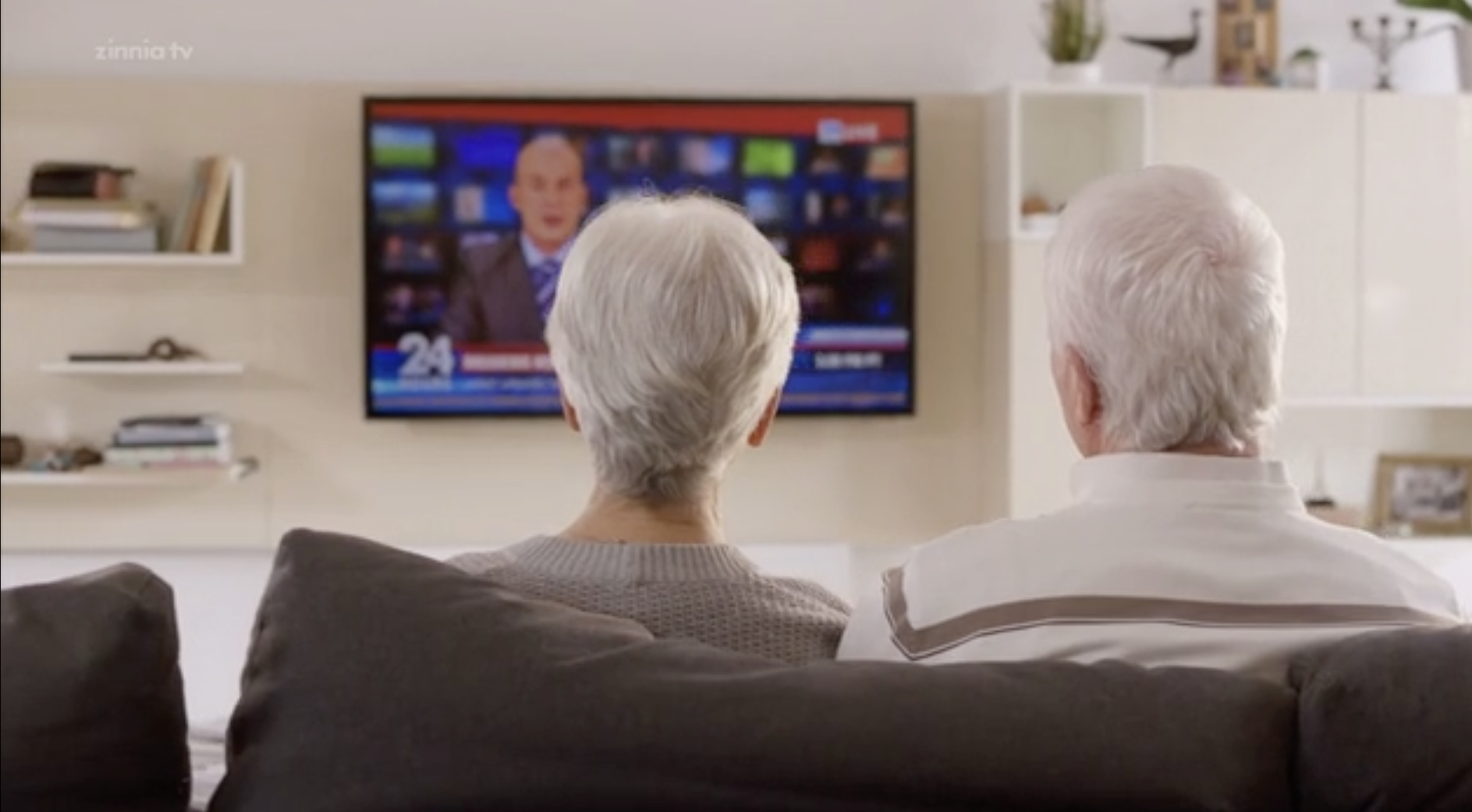
TV Study: TV Programs Tailored to People Living With Dementia
This project explores the use of a TV program that consists of videos tailored to people living with dementia’s needs and interests. This project investigates how this program may be used as a resource improving the quality of life and psychosocial well-being of residents living in long-term care and patients in geriatric acute care that live with mid to late stage memory loss.
This research project is done using the Zinnia TV program.
Study Timeline – The project consists of three phases:
The first phase invites staff in these settings to share their insights working with their clients and explores the potential of designed TV programs supporting their clients and the staff.
The second phase is the implementation of the program with residents/patients.
The third phase evaluates the effectiveness of the TV program. The project is an experiential scientific project using mixed methods.
We are showing TV videos to patients using projectors (photos and other medias from our research sites can be found at the bottom of this page). Interdisciplinary team members are using these projected videos to bring patients a sense of calmness and enjoyment. Videos projected on the walls give patients immersive experiences. The videos include a wide range of topics, such as nature and wildlife, hobbies and interests, babies, and festivals, and are in good quality and audio. We are also in the process of adapting the videos for patients coming from diverse cultural and linguistic backgrounds. For example, we have created videos for patients coming from Cantonese and German-speaking communities. Projectors are head-mounted and thus are safe for patients. Apart from projectors, team members are also showing the videos using different devices for various purposes, such as smart TV for relaxation exercises and tablets for activities for daily living.
Our Team
The current interns for this project are lab members Karen Wong (team lead), Carly Wang, and Deborah Liao under the guidance of Dr Lillian Hung.
Volunteers include: Diane Pan, Irene Chen, Caitlin Lee, Jhannine Geronimo, Jastinne Diaz, Hannah Fong
Family and Patient partners include: Mario Gregorio, Lily Wong, Cindy and Lester Gierach, Mary Li and Colin Leigh, Alice and Fred, and Annette Berndt.

Who Are We?
‘
Our Knowledge Translation (KT) Journey…
Research Frameworks Utilized
PEIRS: Patient Engagement In Research Scale

PEIRS measures the degree of patient engagement in research to help facilitate meaningful involvement of patient and family partners, ensuring that research affecting patients will take into account the perspective of the patients themselves. Created by Arthritis Research Canada scientists, PEIRS will help guide TV Study to ensure accountability for the patients in this project’s target audience.
CFIR: The Consolidated Framework for Implementation Research

Originally published in 1998 with the intention to improve the quality of healthcare for veterans, CFIR was developed by implementation researchers to guide research projects in clinical practice across 5 domains (Process, Individuals involved, Inner setting, Outer setting, Intervention) to identify potential barriers and facilitators for implementations, and structure questions and observations. While qualitative data has always been hard to quantify in research, CFIR is a tool that can be a guide in building a case for or against, for stakeholders, in whether an intervention should be implemented.
Current Findings Using the CFIR Framework:
Our lab aided Zinnia TV in creating videos that could widen their cultural inclusivity, especially in catering to our Vancouver demographics. Watch the following our volunteers, patient and family partners assisted with below:
Drinking water with family partner Lily Wong in Cantonese:

Drinking water with lab intern Sarah in German

Lunar New Year Greetings in Cantonese with family partner Lily Wong and friend, Barb

Here are some of our impactful stories:
- We had a resident in long-term care who did not like drinking water has started drinking water, encouraged by Lily’s video.
- Patients in the hospital enjoyed and laughed together watching videos about animals as a group.
- A patient at the hospital was sad and feeling lonely, and she was cheered up by watching a video about babies.
Papers Published
How can equity, diversity, and inclusion (EDI) principles be incorporated into research excellence with industry and community partners? Lessons learned from Canada and Australia on projects with a dementia focus






Presentations
Photos From Our Team’s Participation in CAG 2023:




AGEWELL 2023 Poster: Impact of dementia TV videos: tailored for people living with moderate to severe dementia in care settings

Evaluation of Smart TV videos tailored for people with moderate to severe dementia in care settings

Designing for People 2023 Poster: Human-centred TV Videos – Collaborative Research and Design, with a Focus on Assisting People in Care Settings Who Have Dementia

TV Study: TV Programs Tailored to People Living with Dementia at MURC 2023 from Diane and Carly
TV Study Presentation at AbSPORU Journal Club
CAG 2022 Poster

GSA 2022 Poster Presentation: Implementing Visual Videos And Images With People With Dementia In Care Settings: A Scoping Review.

How it may look on screen:

Media From Our Sites



Click on the photo below to view our upload on Instagram of the use of the immersive TV program at a research site!
How we use a hospital hallway for a virtual immersive program to engage patients with dementia in conversations

Team Events

In-Person October 7th Meeting: Took a team photo after going over some data analysis, AGEWELL poster feedback and video feedbacks!
Questions?
Email Karen Wong at klywong1@mail.ubc.ca



